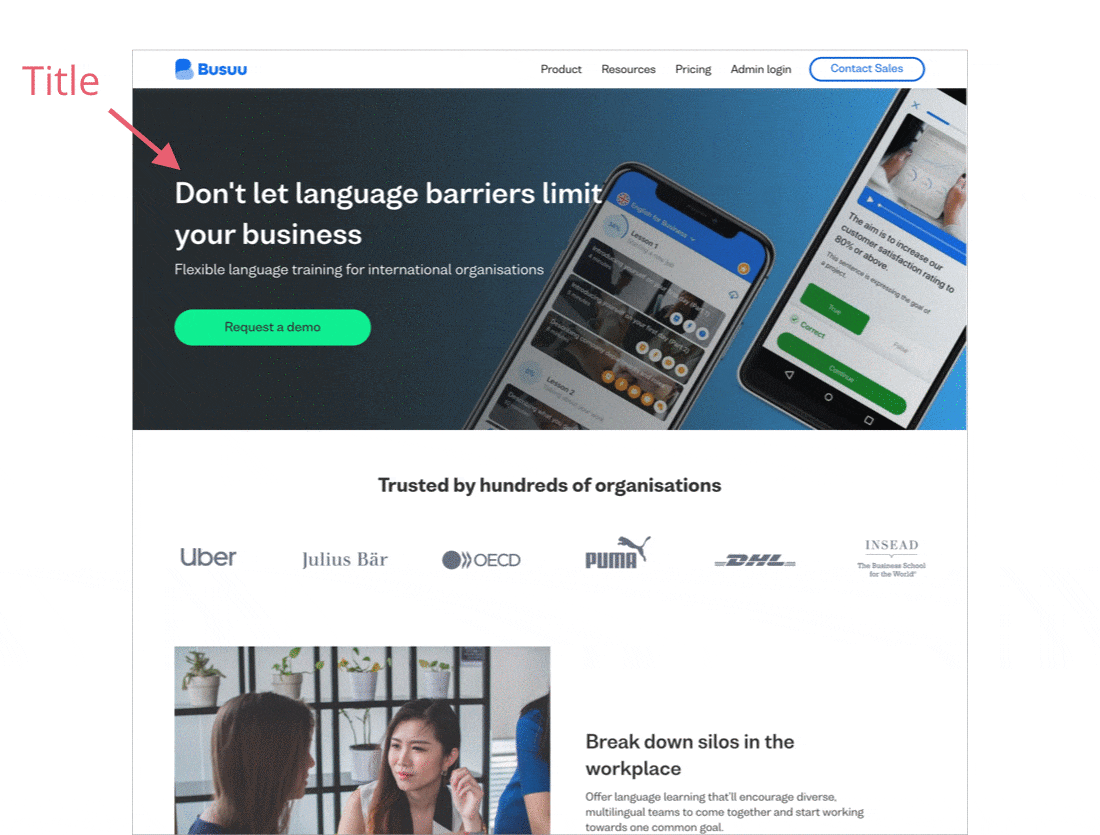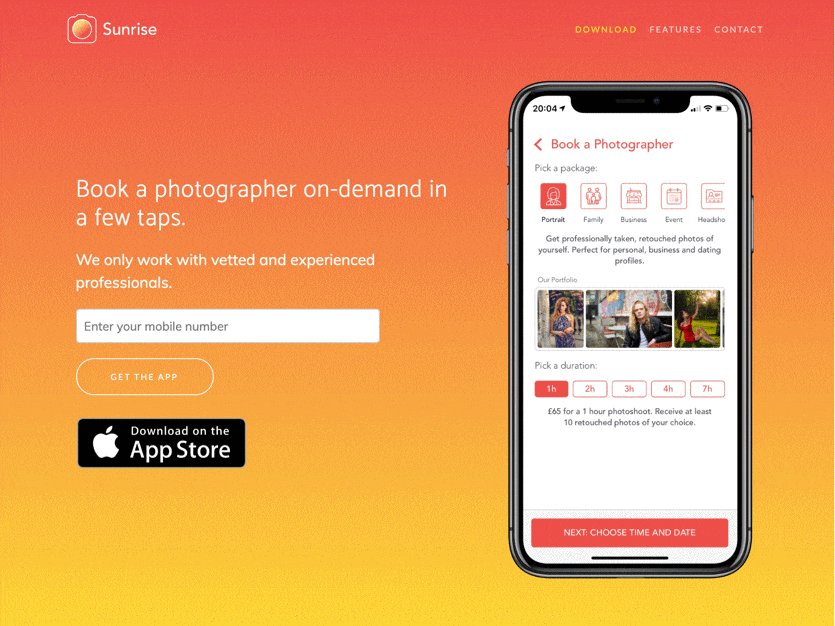

Suppose you have 5 versions of your title, 5 images and 5 backgrounds.
You should test all 125 combinations of them to maximize your conversion rate.
It's suboptimal to run one test for the titles, another test for the images and another for the backgrounds, as this doesn't account for the interaction effects between them — the winning title and winning image might not work well when put together.
A multivariate test solves this by equally testing all 125 combinations, but this requires too much traffic so takes too long.


Instead, our AI mimics evolution.
It starts by testing 5 random combinations out of the 125.
When it gets enough data on those, it kills off the worst ones and replaces them with new combinations similar to the best ones.
This process of "survival of the fittest" automates the testing process and can quickly find a winner even when there are thousands or millions of possible combinations.
Quickly add all your ideas
Hypertune's no-code visual editor lets you quickly select page elements using the Chrome Inspector and define changes to them for each of your ideas.
Preview your changes
Quickly cycle through all combinations of your ideas and preview the changes directly on your website.
Get detailed results
Monitor your evolution in real-time and track conversion rates for the control and test variations in each generation.
Understand the statistical significance of your results with both frequentist and Bayesian analyses.
All plans come with unlimited support and you can cancel at any time.
There are a few reasons why Hypertune works so much better than A/B testing:
1) Since Hypertune tests all your ideas, there's a high chance that it discovers a good one. Whereas in a regular A/B test, there's a high risk that the one idea you're testing isn't very good.
2) Since Hypertune tests all your ideas together, the good ones can overlap to create larger positive effect sizes which the AI can detect and exploit with less traffic than if you tested them separately. Even if you're testing a good idea in a regular A/B test, it's individual effect size might be small and so you'd require a lot of traffic to get a conclusion before moving on.
3) Since Hypertune tests specific combinations of your ideas, it accounts for the interaction effects between them. For example, a certain headline idea and subtitle idea might work really well when put together. If you test your ideas separately in regular A/B tests, you ignore these interaction effects, leading to a suboptimal conversion rate.
4) Finally, Hypertune automates the testing process for you. It quickly discards bad performing combinations of your ideas and explores new ones based on what's working well, in a continuous, iterative process that mimics evolution. This means it can rapidly test hundreds of combinations of your ideas in a faster, more principled way than a human can, giving you results in less time and less effort.
Although the results of each generation within an evolution are not statistically significant, you can be confident that the top combinations that emerge from the evolution overall are great candidates to beat your control. We've carefully tuned our algorithms to get you the best results given your test setup.
Once the evolution has run long enough, you can run a follow up A/B/n test between your control and the best candidates to more precisely measure the conversion rate uplift.
Sometimes the evolution as a whole will statistically significantly beat the control. In these cases, you might leave the evolution running indefinitely.
Hypertune works best when you add as many ideas as possible, each with 2 to 6 variations. The more ideas you add, the higher the chance of Hypertune finding a good combination of them.
Typically, your website needs at least 5,000 monthly unique visitors to benefit from Hypertune. The more traffic you have, the faster Hypertune can work. If you have a low traffic website, then you can use a low to mid funnel conversion goal like clicks or sign ups to significantly speed up Hypertune.
Yes, you can run normal A/B/n and multivariate tests in Hypertune too.
Yes, Hypertune lets you target your experiments to specific audiences, so you can discover the best ideas for each segment.
We can come up with ideas for you and implement them in Hypertune for an additional fee.
No — for simple ideas like changing text, colors and images, you can use our visual editor without needing to code.
For more complex changes, you or your developer may need to implement them with code. If you don't have a developer, we can implement the ideas for you, for an additional fee.